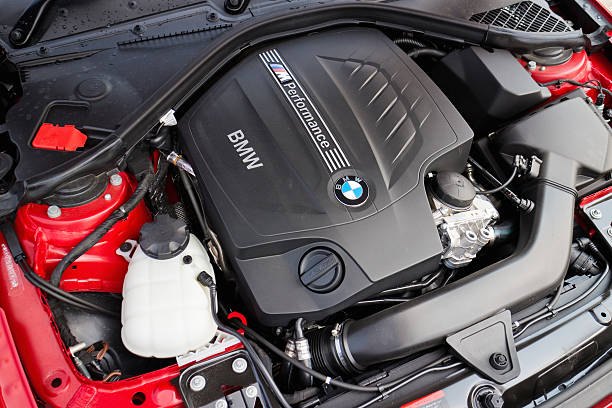
The BMW ECU, or Engine Control Unit, plays a central role in managing engine performance. For BMW drivers in the USA, understanding what an ECU does, how it works, and what can go wrong is essential. This guide explains everything you need to know about BMW ECUs from a U.S. driver’s perspective.
What Is a BMW ECU?
The ECU is essentially the brain of your BMW’s engine. It’s a small computer that collects data from various sensors in your vehicle. It then uses this data to make real-time adjustments to engine operations.
The ECU controls:
- Fuel injection
- Ignition timing
- Air-fuel ratio
- Idle speed
- Turbo boost (for turbocharged engines)
It also communicates with other systems like the transmission control unit (TCU) and the body control module (BCM). In modern BMWs, the ECU is part of a wider vehicle management system.
Why ECUs Are Important in BMW Vehicles
BMW vehicles are known for their performance and precision. The ECU ensures that your engine operates at peak efficiency. It adjusts engine parameters based on:
- Driving conditions
- Fuel quality
- Engine temperature
- Altitude
For example, in colder regions of the USA, the ECU adjusts the fuel mixture to compensate for lower temperatures. In higher elevations like Colorado, it may modify air intake to maintain balance.
Without a properly functioning ECU, fuel economy drops, emissions increase, and the engine may perform poorly.
How BMW ECUs Work
A BMW ECU works by reading inputs from dozens of sensors around the car. These include:
- Oxygen sensors (O2 sensors)
- Crankshaft and camshaft position sensors
- Throttle position sensors
- Mass airflow sensors (MAF)
The ECU then processes this information and sends signals to actuators that control the engine’s operations. This cycle happens in milliseconds.
Modern BMWs use modular ECUs, which means software updates can improve performance or fix issues. These updates can be done at authorized service centers or with specialized diagnostic tools.
Common ECU Issues in BMWs
BMWs are advanced, but even the best systems can face issues. U.S. drivers should be aware of the common symptoms of ECU problems:
1. Check Engine Light (CEL)
This is the most obvious sign. The ECU stores trouble codes that can be read with an OBD-II scanner.
2. Poor Fuel Economy
If your ECU is not correctly adjusting fuel delivery, your car may consume more gas than usual.
3. Engine Misfires or Stalling
Faulty data from sensors or internal ECU damage can lead to irregular engine performance.
4. Starting Problems
A completely failed ECU might prevent your BMW from starting at all.
5. Transmission Issues
Though controlled separately, a malfunctioning ECU can send incorrect signals to the transmission unit.
Diagnosing BMW ECU Problems
In the USA, many auto shops use advanced tools like BMW ISTA, Autologic, or INPA to diagnose ECU problems. A typical diagnostic process includes:
- Reading fault codes
- Testing sensor data
- Checking ECU voltage levels
- Verifying software versions
If you’re a DIY enthusiast, you can use OBD-II tools compatible with BMW systems. But advanced diagnostics should be handled by a professional, especially in newer models.
BMW ECU Replacement and Programming in the USA
If your ECU is damaged beyond repair, it will need replacement. Here’s what U.S. drivers should know:
OEM vs. Aftermarket ECUs
- OEM (Original Equipment Manufacturer) ECUs are exact replacements but cost more.
- Aftermarket ECUs can be more affordable but might lack compatibility or advanced features.
ECU Programming
Once replaced, the new ECU must be programmed to match your BMW’s VIN and configuration. This includes:
- Immobilizer pairing
- Software flashing
Feature coding
In the U.S., many shops offer BMW ECU cloning, which copies the data from your old ECU to a new one. This can save time and cost.
Can a BMW ECU Be Repaired?
In many cases, yes. ECU repair is a common service offered in the USA. It involves:
- Replacing damaged electronic components
- Fixing solder joints
- Reflashing corrupted software
However, repair isn’t always possible. If the microprocessor is fried or the board is physically damaged, replacement is the only option.
ECU Tuning and Reflashing: Legal Considerations in the USA
ECU tuning is popular among performance enthusiasts. It allows:
- Increased horsepower
- Better throttle response
- Custom fuel maps
However, in the USA, it’s important to stay compliant with EPA regulations. Unauthorized tuning can void warranties and violate emissions laws.
Always check your state’s emissions rules, especially in California, where standards are stricter under CARB (California Air Resources Board).
Keeping Your BMW ECU Healthy
Regular maintenance can extend the life of your ECU:
- Use high-quality fuel
- Avoid water exposure in the engine bay
- Replace worn-out sensors
- Avoid jump-starting with improper methods
Also, keep your software up to date. Many BMW ECUs can be updated via dealership tools or over-the-air (OTA) updates in newer models.
Final Thoughts
The BMW ECU in the USA is a vital component that ensures optimal engine performance. Understanding how it works and recognizing early warning signs can help you avoid costly repairs. Whether you’re dealing with a simple sensor issue or considering a full ECU replacement, knowledge is your best tool.



